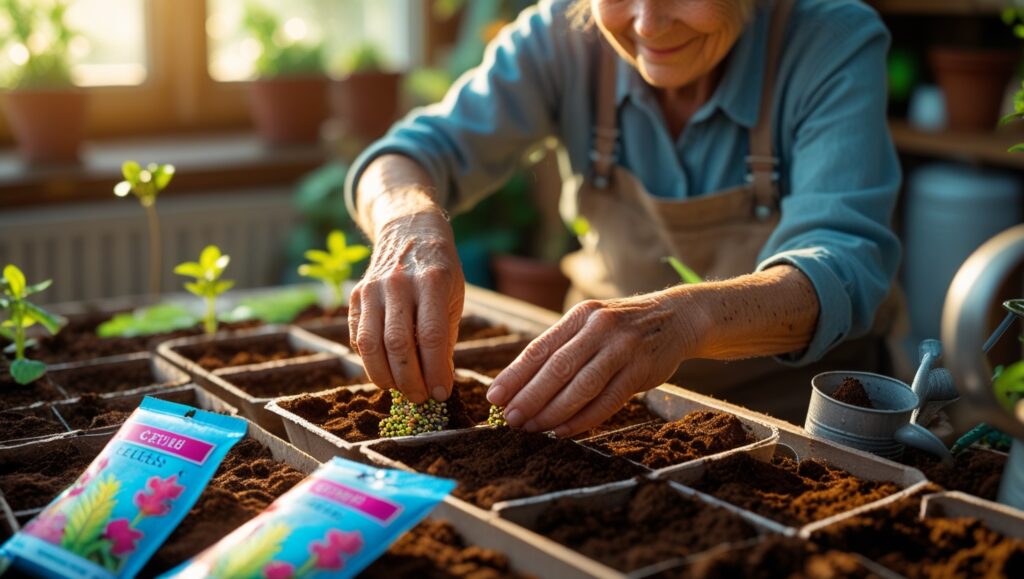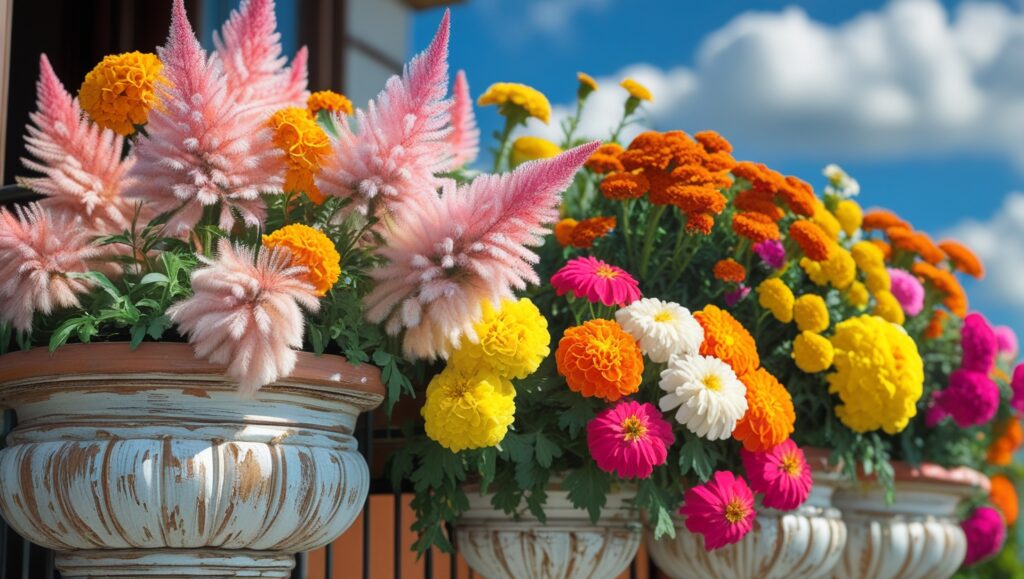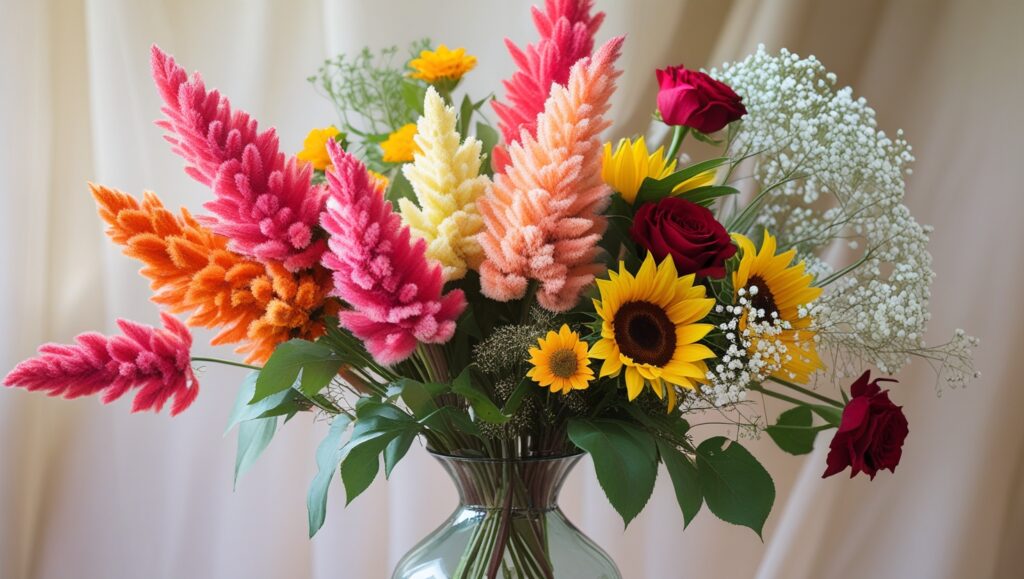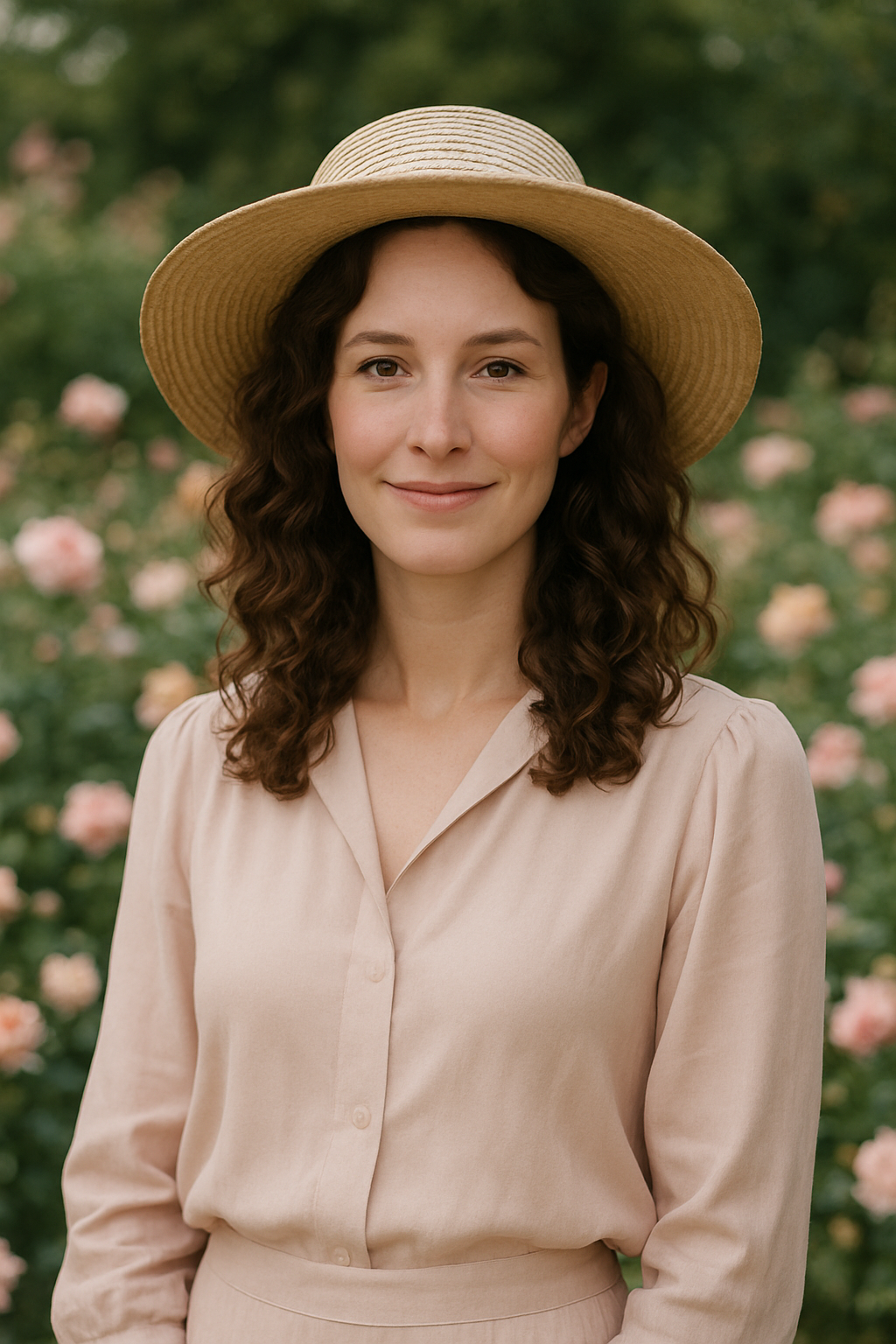
There’s a certain magic to Celosia. Its feathery plumes, coral-like crests, and shimmering colors feel like a celebration in the garden—no matter the season. I still remember my first summer with Celosia; a single packet of seeds turned into a border of rich reds, sunny yellows, and velvety purples that stopped passersby in their tracks. For beginner gardeners, it’s one of the most rewarding flowers you can grow—fast to bloom, forgiving with care, and long-lasting both in the garden and vase.
In this guide, I’ll walk you through every step of Growing Celosia successfully—when to plant it, how to choose the right varieties, and the best ways to keep those blooms going strong. Whether you’re planting in open beds or a balcony pot, Celosia will bring texture, color, and joy to your garden from summer until the first frost.
Introduction to Celosia
What is Celosia?
Celosia (Celosia argentea) is a heat-loving annual known for its uniquely shaped blooms—ranging from fluffy plumes to intricate crests—that hold their color for weeks. It thrives in warm climates and attracts pollinators like bees and butterflies, making it a beautiful and beneficial addition to your garden. In floral design, Celosia is prized for its long vase life, often lasting up to 14 days when cut fresh.
For beginners, one of the best things about Growing Celosia is its resilience. As long as it gets full sun and well-drained soil, it will reward you with showy, vibrant flowers all summer long.
Popular Types and Varieties (Plumosa, Cristata, Spicata, Argentea)
- Celosia plumosa – Upright, feathery plumes in shades of red, orange, and yellow. Great for mass plantings.
- Celosia cristata – Also called cockscomb; velvety, brain-like crests in bold jewel tones. Excellent for cut flowers.
- Celosia spicata – Wheat-like spikes, perfect for adding texture to bouquets.
- Celosia argentea – The wild species form, from which most cultivated varieties descend.
Best Time and Climate for Growing Celosia
Ideal Planting Seasons by USDA Zone
Celosia is a warm-season plant that cannot tolerate frost. In the U.S.:
- Zones 9–11: Start seeds outdoors after last frost; blooms can last until late fall.
- Zones 6–8: Start indoors 4–6 weeks before last frost date, then transplant.
- Zones 3–5: Start indoors early; transplant only when soil has warmed to at least 60°F.
Planting too early in cold soil can stunt growth, so timing is everything for Growing Celosia successfully.
Temperature and Light Requirements for Healthy Growth
- Temperature: 70–85°F during the day is ideal; growth slows below 60°F.
- Light: Full sun (6–8 hours daily) is essential for strong stems and vibrant color.
A common mistake I see is planting Celosia in partial shade—this often leads to weak, floppy stems and duller blooms. For healthy, long-lasting flowers, light is as important as soil when Growing Celosia.
Planting Celosia Step-by-Step
Starting Celosia from Seed Indoors

- Fill seed trays with a fine, well-draining mix.
- Press seeds lightly on the surface (they need light to germinate).
- Keep trays at 70–75°F with consistent moisture.
- Germination usually takes 7–10 days.
Direct Sowing Outdoors
If your growing season is long and frost-free early, sow seeds directly into prepared beds after soil reaches 65°F. Keep soil consistently moist until seedlings establish.
Transplanting Seedlings Without Shock
Harden off seedlings for 5–7 days before planting outdoors. Transplant on a cloudy day or late afternoon to reduce stress. Handle seedlings by their leaves, not stems, to avoid damage.
Recommended Spacing and Depth
- Spacing: 8–12 inches apart for small varieties, 12–16 inches for larger types.
- Depth: Surface sow or cover very lightly with soil.
Spacing is more than just about looks—it improves airflow, reducing disease risk when Growing Celosia.
Soil and Watering Requirements
Best Soil Type and pH Range
Celosia thrives in loose, well-draining soil enriched with compost. A pH range of 6.0–7.0 works best. Heavy clay should be amended with organic matter to avoid waterlogging.
Watering Schedule for Different Growth Stages
- Seedlings: Keep evenly moist until established.
- Mature plants: Water deeply once or twice a week, depending on weather.
Overwatering can cause root rot, so let the top inch of soil dry before watering—an essential habit in Growing Celosia.
Drainage Tips to Prevent Root Rot
- Plant in raised beds or well-drained containers.
- Avoid areas where water pools after rain.
- Mix coarse sand or perlite into soil if drainage is poor.
Feeding and Fertilizing Celosia
Choosing the Right Fertilizer (NPK Ratios)
Celosia loves nutrient-rich soil but doesn’t need excessive feeding. A balanced fertilizer like 10-10-10 or a slightly higher phosphorus ratio (such as 5-10-5) encourages strong blooms. Phosphorus supports flower development, while nitrogen should be moderate—too much will give you lush leaves but fewer flowers.
Organic vs Synthetic Feeding Methods
For gardeners like me who prefer organic methods, compost tea or fish emulsion works beautifully and improves soil health over time. Synthetic fertilizers, on the other hand, deliver quick results and can be useful during peak bloom season. The key is consistency—feeding every 3–4 weeks during active growth is ideal when Growing Celosia.
Seasonal Care for Celosia
Summer Care in Hot Climates
In extreme heat, mulch around plants to keep roots cool and retain moisture. Even though Celosia loves sun, prolonged temperatures above 95°F may cause blooms to fade faster, so provide light afternoon shade in such conditions.
Protecting Plants from Early Frost
Because Celosia is highly frost-sensitive, even a light freeze can blacken leaves overnight. In cooler zones, cover plants with frost cloth when night temperatures drop below 40°F to extend your blooming season.
Overwintering Celosia and Saving Seeds
Celosia is typically grown as an annual, but you can save seeds for the next year. Allow flower heads to dry completely on the plant, then shake seeds into a paper envelope. Store in a cool, dry place for up to three years—one of the easiest and most rewarding parts of Growing Celosia.
Growing Celosia in Pots and Containers
Choosing the Right Pot Size and Material
Use pots at least 12 inches deep for dwarf varieties and 16 inches for larger types. Clay pots allow better airflow to roots, while plastic retains moisture longer.
Potting Mix for Maximum Blooms
A high-quality, lightweight potting mix enriched with compost ensures good drainage while feeding your plants.
Balcony and Patio Growing Tips

Place containers where they’ll receive at least 6–8 hours of sunlight. Rotate pots every week for even growth. Water more frequently than in-ground plants since containers dry out faster—this is crucial for container Growing Celosia success.
Pruning, Deadheading, and Harvesting
How to Deadhead for Continuous Blooms
Remove spent flowers promptly by cutting the stem back to the next healthy leaf set. This signals the plant to produce more blooms instead of setting seed.
Harvesting for Fresh and Dried Arrangements

Cut Celosia stems early in the morning when blooms are fully open but still firm. For dried flowers, hang stems upside down in a dark, airy place for 2–3 weeks.
Extending Vase Life of Cut Celosia
- Use clean, sharp scissors to cut stems.
- Strip leaves below the waterline.
- Change water every 2 days and re-trim stems.
With proper care, cut Celosia can last 10–14 days—one of the longest vase lives for annual flowers.
Common Problems and Solutions
Pests That Affect Celosia and How to Treat Them
- Aphids: Spray with a strong stream of water or neem oil.
- Spider mites: Increase humidity and use insecticidal soap.
Preventing and Managing Fungal Diseases
Overcrowding and poor air circulation can cause powdery mildew or leaf spot. Space plants properly and water at soil level to keep foliage dry.
Why Celosia May Stop Blooming and How to Fix It
If blooms slow down, the cause may be excessive nitrogen, too little sun, or heat stress. Adjust feeding, increase light exposure, and deadhead regularly to restore flowering.
Using Celosia in Gardens and Floral Design
Companion Planting Ideas
Celosia pairs beautifully with marigolds, zinnias, and salvia for a bold, pollinator-friendly bed.
Best Celosia Varieties for Bouquets and Drying
- ‘Chief Mix’ – Tall, vibrant plumes ideal for cutting.
- ‘Sunday Bright Pink’ – Long stems and soft texture.
- ‘Century Mix’ – Drought-tolerant and great for drying.
Quick Reference Table for Growing Celosia
| Requirement | Ideal Condition |
|---|---|
| Sunlight | 6–8 hours full sun daily |
| Spacing | 8–12 inches (small), 12–16 inches (large) |
| Soil pH | 6.0–7.0 |
| Watering | 1–2 times weekly, deep soak |
| Fertilizer | Balanced (10-10-10) every 3–4 weeks |
| Bloom Time | Summer to first frost |
| USDA Zone | Annual in all zones; perennial in 10–11 |
Conclusion
Celosia rewards attentive care with dazzling color and texture that lasts from summer until frost. Give it sun, well-drained soil, regular deadheading, and consistent feeding, and you’ll enjoy a garden display that turns heads and lifts spirits.
If you’ve been hesitant to try Growing Celosia, I can promise you—it’s one of the easiest ways to bring joy and vibrance to your flower beds or containers. Once you see those first blooms unfurl, you’ll wonder why you didn’t plant them sooner.
FAQs About Growing Celosia
Q1: Can I grow Celosia indoors year-round?
Yes, with strong grow lights and warm temperatures, though blooms may be smaller than outdoor plants.
Q2: How tall does Celosia get?
Depending on variety, plants can range from 6 inches to over 3 feet tall.
Q3: Is Celosia safe around pets?
Yes—Celosia is non-toxic to cats and dogs.
Q4: How do I keep Celosia blooms vibrant?
Provide full sun, moderate feeding, and regular deadheading.
Q5: Will Celosia reseed itself?
In warm zones, yes. In cooler zones, you’ll need to replant each spring or save seeds

